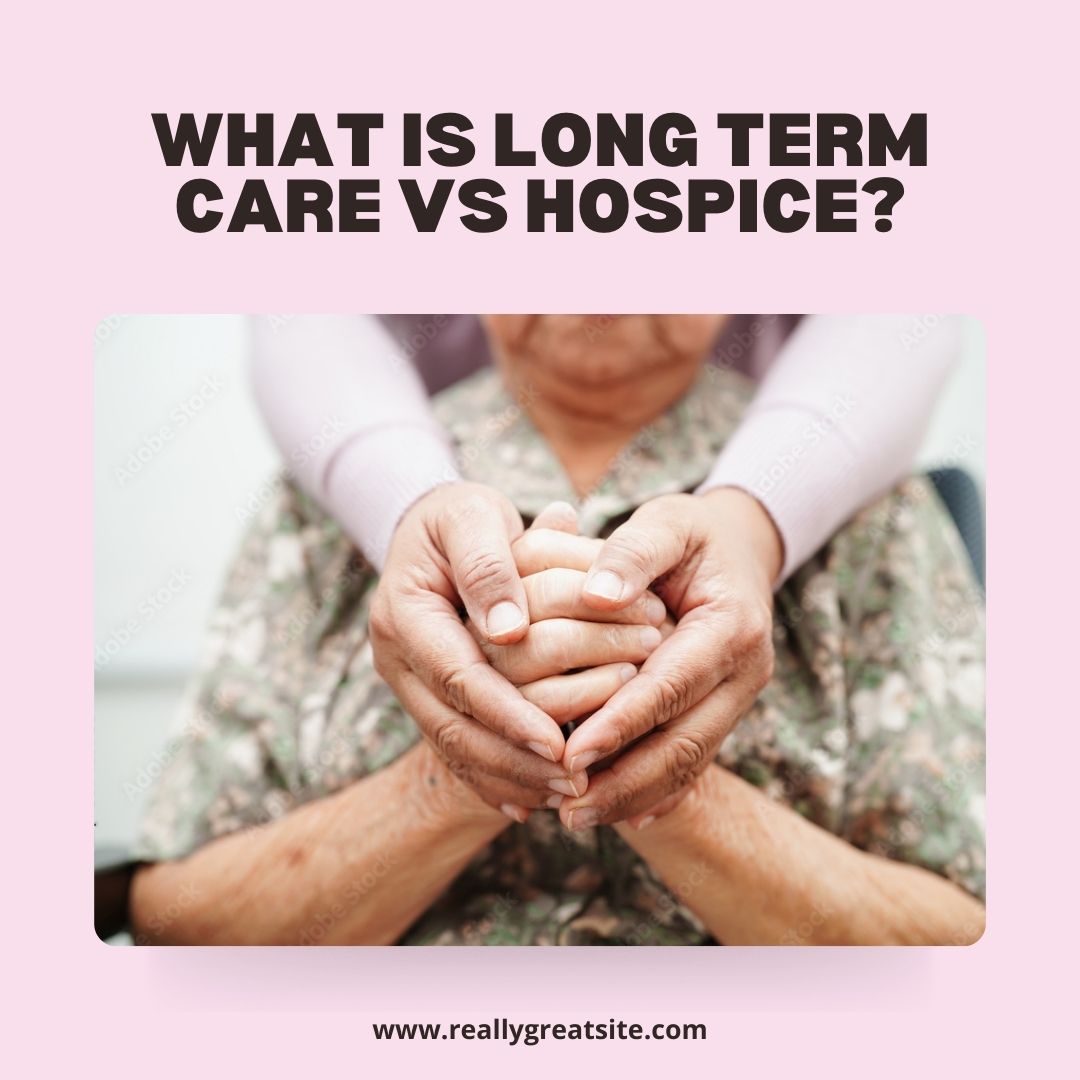Quick Answer: What Is Long Term Care vs Hospice?
Long-term care provides ongoing daily support for people with chronic illnesses or disabilities who need help with basic tasks over an extended period. Hospice care, on the other hand, is for people with a terminal illness and a prognosis of six months or less, focusing on comfort and quality of life when curative treatment is no longer chosen. Long-term care keeps people safe and supported day to day, while hospice makes end-of-life as peaceful and pain-free as possible.
Choosing Care: Long Term Care vs Hospice
Understanding Care Options
Helping a loved one through serious illness is a journey filled with questions and decisions. One choice many families face is deciding on the right type of care. The options can feel overwhelming, especially when hearing terms like “hospice,” “long-term care,” and “palliative care.” This guide breaks down the key differences between hospice and long-term care, so you can feel more confident about your next steps.


What Is Long-Term Care?
Definition and Main Features
Long-term care provides support for people who need help with daily activities over an extended period. Most often, long-term care is offered in nursing homes, assisted living facilities, or sometimes at home. This care is usually needed due to chronic illnesses, memory loss, or physical disabilities that make independent living unsafe or difficult.
Who Needs Long-Term Care?
People who might need long-term care often:
- Live with ongoing medical conditions like dementia, Parkinson’s disease, or advanced heart disease
- Have experienced strokes or injuries that limit their independence
- Need help with personal care (bathing, dressing, eating, or moving around)
Where Is Long-Term Care Provided?
- Nursing homes
- Assisted living facilities
- Private homes with home health support
Common Services in Long-Term Care
- Help with bathing, dressing, and meal preparation
- Medication management and administration
- Physical, occupational, or speech therapy
- 24/7 supervision for safety
- Social activities and community support
Long-term care can last from several months to many years, depending on the person’s health and needs. It focuses on keeping individuals comfortable and as independent as possible, but care plans can change over time as conditions progress.
What Is Hospice Care?
Definition and Main Features
Hospice care focuses on comfort and quality of life for people facing a terminal illness, usually with a prognosis of six months or less. The main goal is to manage pain and symptoms rather than cure the illness. Hospice is provided in the place the patient calls home, which can include private homes, nursing facilities, or assisted living settings.
Who Qualifies for Hospice?
People who may be ready for hospice often:
- Have a terminal diagnosis confirmed by a doctor
- Wish to stop curative treatments and focus on comfort
- Need help controlling pain and symptoms
- Want emotional and spiritual support for themselves and their families
Where Is Hospice Provided?
- Private residences
- Nursing homes
- Assisted living facilities
Core Services in Hospice Care
- Regular visits from registered nurses
- Pain and symptom management
- Personal care by home health aides
- Emotional, social, and spiritual support through counselors and chaplains
- Help with everyday tasks, allowing families to focus on time together
- Bereavement counseling for families after loss
Hospice provides support for both the patient and their loved ones, helping everyone find peace and comfort during a difficult time.

Hospice vs Long Term Care: Key Differences
Comparison Table: Hospice vs Long-Term Care
| Feature | Hospice Care | Long-Term Care |
|---|---|---|
| Purpose | Comfort & quality of life | Daily support over extended time |
| Who Qualifies | Terminal illness, 6 months or less | Chronic illness, disabilities |
| Focus | Comfort, symptom relief | Assistance with daily living |
| Location | Home, nursing, assisted living | Nursing home, assisted living, home |
| Medical Treatments | Stops curative, focuses on comfort | May include ongoing treatment |
| Payment/Coverage | Often fully covered by Medicare | Mix of insurance, Medicaid, private pay |
| Emotional/Spiritual Support | Central to care | Available but varies |
Main Differences
Hospice care is for those nearing the end of life who want comfort and dignity, without aggressive treatment. Long-term care supports people with long-term illnesses or disabilities, and can continue for years. The focus in hospice is on making the most of each day, while long-term care centers around helping with basic needs and safety.
What Is Palliative Care?
Definition and Purpose
Palliative care offers comfort and practical support to people with serious illnesses at any stage, not just those near the end of life. The focus is on easing symptoms, reducing pain, and addressing emotional or spiritual needs while the patient continues treatment for their condition.
Who Benefits from Palliative Care?
People who may need palliative care often:
- Face a disease that affects their daily life (such as cancer, heart failure, or COPD)
- Experience pain, nausea, fatigue, or anxiety from illness or treatment
- Want relief from tough symptoms while still pursuing therapies like chemotherapy, dialysis, or surgery
- Need extra emotional, psychological, or spiritual support
Common Palliative Care Services
- Relief from pain and difficult symptoms
- Emotional and psychological counseling for patients and families
- Coordinating care among doctors and specialists
- Education about illness and treatment options
- Spiritual support and guidance
Palliative care helps people feel their best while they continue to fight or manage their disease. It works alongside standard medical care and adapts as needs change.

Palliative Care vs Long Term Care: Shaping the Right Support
Comparison Table: Palliative Care vs Long Term Care
| Feature | Palliative Care | Long-Term Care |
|---|---|---|
| Focus | Symptom relief, support | Help with daily tasks, supervision |
| Timing | Any stage of illness | Ongoing need for daily support |
| Curative Treatment | Can be combined with treatment | Usually assists daily living, not treatment |
| Main Goal | Improve comfort & quality of life | Support independence & safety |
| Location | Hospital, home, or facility | Nursing home, assisted living, home |
| Emotional/Spiritual Support | Core part of care | Can be provided, often secondary |
Key Differences
Palliative care zeroes in on symptom management for people at any phase of illness, with or without ongoing treatment. Long-term care focuses more on helping with daily activities and personal needs for those struggling with independence, no matter their diagnosis.
Long-Term Acute Care vs Hospice: Special Considerations
Defining Long-Term Acute Care (LTAC)
Long-term acute care (LTAC) is for patients with serious medical needs who need extended hospital-level care. These are people who need intensive treatment for weeks or months, often after a hospital stay, but who are not ready for standard rehabilitation or skilled nursing care.
Typical LTAC patients may have:
- Complicated respiratory problems needing ventilator support
- Severe infections
- Complicated wound care
- Ongoing need for IV medications or nutrition
LTAC hospitals deliver high-level medical treatment, therapies, and close monitoring, aiming to stabilize or improve health.
Comparison Table: Long-Term Acute Care vs Hospice
| Feature | Long-Term Acute Care (LTAC) | Hospice |
|---|---|---|
| Patient Condition | Medically unstable, need complex treatment | Terminal illness, focus on comfort |
| Primary Goal | Recovery or stabilization | Comfort and quality of life |
| Setting | Specialized hospital | Home, nursing, assisted living |
| Treatments Provided | Aggressive medical interventions | Symptom control, no curative treatments |
| Length of Stay | Weeks to months | Usually 6 months or less |
| Insurance Coverage | Medicare, Medicaid, private insurance | Often fully covered by Medicare |
Key Differences
LTAC focuses on life-sustaining medical support and intensive therapies for those who still hope to recover or improve. Hospice is for people who have decided to stop life-prolonging treatments and want comfort and peace at the end of life.
When to Consider Each Type of Care
Decision Checklist
Signs Long-Term Care May Be Needed
- Your loved one requires daily help with basic tasks like bathing or eating.
- Safety in the home is a concern due to confusion or mobility issues.
- Medical conditions are stable but recovery is unlikely.

Signs Hospice May Be Needed
- The doctor estimates life expectancy is six months or less.
- Person has decided to stop curative treatments.
- Focus is on comfort and relief from distressing symptoms.
- Emotional or spiritual support is needed for patient and family.
When Palliative Care Might Help
- Symptoms like pain, nausea, or anxiety are hard to manage.
- Active treatment for illness is ongoing, but quality of life is suffering.
- Peace of mind, emotional, or spiritual support is needed.
Choosing between these types of care often comes down to the person’s goals, medical status, and the kind of comfort they want or need.
How Suncrest Supports Families
Our Approach
At Suncrest, we believe every patient deserves comfort, respect, and genuine support. Our experienced team helps people with advanced illnesses live each day fully, surrounded by caring professionals. We understand that every family’s needs are different, so we focus on clear communication and compassion in every step we take.
What Sets Suncrest Apart?
- More Visits: We visit patients more often than most hospice providers, offering peace of mind and continuous support.
- Specialized Care Team: Our staff includes top nurses, home health aides, social workers, chaplains, and bereavement counselors.
- Emotional and Spiritual Care: Suncrest provides massage, music, animal therapy, and spiritual support when available.
- Bucket List Moments: We help patients fulfill meaningful wishes or experiences whenever possible.
- Bereavement Support: Families receive guidance and comfort even after their loved one has passed.
- Annual Memorial: Each year, we honor and remember our patients with a dedicated memorial event for their families.
Our care plans are built around each individual’s wishes and comfort. We work with families to make important decisions simpler, providing answers and support when it matters most.
Frequently Asked Questions – Hospice Vs. Long-term Care
Can someone get palliative care in a long-term care facility?
Yes. Many long-term care facilities partner with palliative care teams to give residents extra comfort and symptom relief as their needs change.
Does insurance pay for hospice and long-term care?
Hospice is often fully covered by Medicare, Medicaid, and most private insurance plans. Long-term care may be covered by Medicaid, long-term care insurance, or private pay, but coverage and benefits vary.
What does comfort care mean?
Comfort care focuses on easing pain and uncomfortable symptoms, rather than curing illness. It includes medical, emotional, and spiritual support for patients and their loved ones.
How do I decide if hospice is right for my loved one?
If your loved one’s doctor believes they have six months or less to live and the focus shifts to comfort, it may be time for hospice. You can discuss this option with your healthcare provider or talk to a Suncrest Hospice nurse for guidance.
Need Advice? Contact Suncrest Hospice
Get Personalized Support Today
Choosing between hospice, long-term care, or palliative care can feel overwhelming. You do not have to make these decisions alone. The Suncrest team is here to answer your questions, explain your options, and support your family every step of the way.
Contact Suncrest Hospice today to speak with a caring expert. We can help you understand which type of care best fits your loved one’s needs and bring comfort and clarity when you need it most.
Check out our Hospice YouTube Channel

